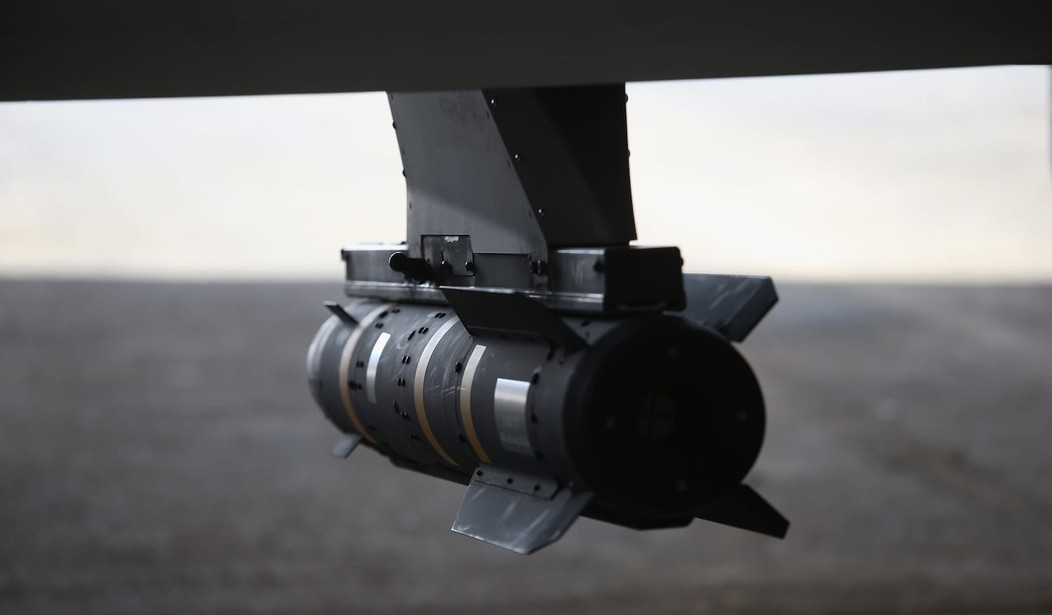A U.S. Hellfire anti-tank missile — a weapon launched from Predator drones in anti-terrorism operations, among other uses — found its way into the hands of Cuba’s government in 2014.
But the route it took, twice crossing the Atlantic, was less mysterious than the U.S. government’s public response to the discovery that front-line American military equipment made it to Havana — or beyond.
The Wall Street Journal reported that a missile shipped by Lockheed Martin to Spain for a NATO exercise was supposed to be put on a flight from Madrid to Frankfurt and then back to the United States. Wrote the Journal:
[The cargo] was clearly marked as containing material subject to rigorous export controls, and that shipping information would have made clear to anyone handling it that it wasn’t regular cargo.
U.S. regulations require that such cargo be loaded by DOD personnel onto U.S. carriers. Yet there were apparently commercial shipping companies involved:
… [One] operated by Air France, which took the missile to Charles de Gaulle Airport in Paris … and headed to Havana.
Further:
At some point, officials [U.S. military personnel] loading the first flight [in Frankfurt] realized the missile it expected to be loading onto the aircraft wasn’t among the cargo, the government official said.
Working backwards, they discovered the shipment had been handled by commercial carriers and then placed on a non-U.S. plane.
This public version of events raises several red flags:
- Defense contractor Lockheed Martin shipped a missile to Spain for a NATO exercise. But arms and equipment would normally come from U.S. military stores, already on NATO bases. The Hellfire is in common usage in NATO.
- It is unclear from the article who controlled the missile at the end of the exercise. The wording of the Journal story is odd:
“The missile was packaged in Rota, Spain, a U.S. official said, where it was put into the truck belonging to another freight-shipping firm, known by officials who track such cargo as a ‘freight forwarder.’ That trucking company released the missile to yet another shipping firm.”
- Properly marked military cargo found its way into the hands of commercial freight shippers, when, as mentioned, U.S. regulations require that such cargo be carried and loaded by DOD personnel.
- The U.S. has not clarified how many commercial shipping firms were involved — there were two or three, depending on how you read the story. Either way, we have now been told that multiple commercial firms failed to recognize they were carrying clearly labeled military equipment.
- Mistakes happen — but several people, at several firms, making the mistake of their lives … on the same package?
Conspiratorial explanations suddenly appear more rational than the official story. Did someone bribe someone to gain control of this cargo? Maybe Lockheed Martin was set up to make the delivery to Cuba look like a mistake instead of a decision? Did the U.S. government sell the missile to Cuba during the prelude to the reestablishment of U.S.-Cuban relations?
That last one should have been easy to dispose of. Yet it isn’t now, because of the response of State Department Spokesman John Kirby. He was specifically asked whether the U.S. actually sold the missile to Cuba. Kirby answered:
I am restricted under federal law and regulations from commenting on the specific defense trade, licensing cases, and compliance matters. What I can say is under the Arms Export and Control Act, the State Department licenses both permanent and temporary exports by U.S. companies of regulated defense articles.
Not only is that not a denial, that’s Kirby saying the Arms Export Control Act gives the State Department the right to grant licenses of military equipment.
So Kirby chose that moment to affirm that the State Department has the right to sell “defense articles” to, say, Cuba. Further pressed by reporters, Kirby declined to say that the U.S. did not or would not authorize a transfer to Cuba.
At that time, Cuba was still on the State Department list of terror sponsoring countries.
Thus far, Lockheed Martin declines to comment, and Cuba declines to return the missile.
On the one hand, U.S. officials don’t think the Cubans can do much damage with the missile. On the other hand, an unnamed American official though it might pass from Cuba to another country. He mentioned Russia, China, or North Korea as possibilities; he did not mention Iran.
Russia and China have their own versions of the Hellfire. Russia has the Vikhr and China has the JH10, both of which are comparable to the U.S. missile although significantly cheaper. It is unlikely that either state would need to steal or buy a Hellfire on the black market.
According to a former U.S. government official, Russia does not export the Vikhr to Iran — although it does sell them the ATAKA, a less competent anti-tank missile.
The relationship between Cuba and Iran is well-documented. Is it time to consider the possibility that Havana sent a gift to Tehran? Or that the U.S. used Cuba as a third party to send a gift to Tehran during the sensitive period leading up to the 2013 “Interim Agreement” on nuclear technology, which led to the 2015 Joint Comprehensive Plan of Action (JCPOA)?
Consider what else was negotiated with Iran during the period.
Three American hikers were captured by Iran and imprisoned as spies in 2009; the first was released in 2010 and the others in September 2011. In 2012, the United States released Iranian prisoners Shahrzad Mir Gholikhan, Nosratollah Tajik, and Amir Hossein Seirafi, all of whom worked for the Islamic Republic’s military establishment. Gholikhan had been convicted on three counts of weapons trafficking. Tajik tried to buy night-vision goggles. Seirafi attempted to purchase specialized vacuum pumps that could be used in the Iranian nuclear program.
The deal was already lopsided in Iran’s favor. But then we gave them more, with the later release of Mojtaba Atarodi, a top Iranian scientist arrested in 2011 for attempting to acquire nuclear-related technology. Atarodi’s release came shortly after the then-secret U.S.-Iran talks that began in March 2013. The Interim Agreement was signed in November 2013.
The Hellfire missiles, for which Cuba has no use, arrived in Havana in the first part of 2014.
The U.S. was negotiating better relations with both Iran and Cuba during 2014. Cuba couldn’t use Hellfire missiles, but Iran could — the Hellfire would be an upgrade over the Russian missiles they had. Recall that Iran could supply such a weapon to allies such as Hezbollah, to weaponize their drones for attacking Israel.
The implications are dire, State’s public explanation is not credible, Kirby’s response is close to an admission of guilt, and the Obama administration has yet another massive scandal on its hands.








Join the conversation as a VIP Member